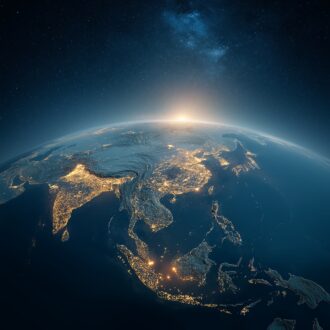When classifying tsunamis, scientists consider a sufficient number of factors for their occurrence, among which are meteorological disasters, explosions and even tides, with low wave rolls of about 10 cm high being added to the list.
By Shaft Strength.
The shale strength is measured taking into account its maximum height and how catastrophic consequences it has caused, and, according to the international IIDA scale, there are 15 categories, from -5 to +10 (the more victims, the higher the category).
According to the intensity
According to the intensity, the “killer waves” are divided into six points, which give a characteristic of the consequences of the disaster:
Waves with a category of one point are so small that they are recorded only by instruments (most people do not even guess about their presence).
Two-point waves can slightly flood the shore, so only specialists can distinguish them from the fluctuations of ordinary waves.
Waves, which are classified as three-point waves, have enough power to throw small boats onto the shore.
Four-point waves can not only nail large ships to the shore, but also throw them onto the coast.
Five-point waves are catastrophic. They can destroy low buildings, wooden constructions, and lead to human casualties.
As for the six-point waves, the coast is completely devastated by the waves along with the adjacent land.
According to the number of victims
According to the number of fatalities, there are five groups of this dangerous phenomenon. The first group includes situations when fatal outcomes were not recorded. To the second – waves that caused the deaths of up to fifty people. Waves belonging to the third category cause death of fifty to one hundred people. The fourth category is the “killer waves”, which killed from one hundred to one thousand people.
The consequences of tsunamis belonging to the fifth category are catastrophic, as they entail the death of more than one thousand people. Usually such disasters are characteristic of the waters of the deepest ocean in the world, the Pacific Ocean, but they often occur in other parts of the planet as well. This applies to disasters near Indonesia in 2004 and in Japan in 2011 (25 thousand deaths). There were recorded “killer waves” in the history and in the territory of Europe, for example, in the middle of the XVIII century, a thirty-meter wave fell on the coast of Portugal (during the disaster 30 to 60 thousand people died).
Economic damage
As for economic damage, it is measured in American dollars and calculated by taking into account the costs to be allocated to rebuild the destroyed infrastructure (lost property and destroyed homes are not taken into account, because they belong to the social costs of the country).
According to the size of the losses, economists distinguish five groups. To the first category belong the waves which didn’t cause much damage, to the second – with losses up to 1 million dollars, to the third – up to 5 million dollars, to the fourth – up to 25 million dollars.
Damage from waves belonging to the fifth group exceeds $25 million. For example, the losses from the two strongest natural disasters, which took place in 2004 near Indonesia and in 2011 – in Japan, amounted to about 250 billion dollars. The environmental factor is also worth considering, since the waves that caused the death of 25,000 people damaged a nuclear power plant in Japan and caused an accident.
Disaster Identification Systems
Unfortunately, “killer waves” often occur so suddenly and at such high speeds that it is extremely difficult to detect their appearance, and therefore seismologists often fail to do their job.
For the most part, disaster warning systems are based on the processing of seismic data: if an earthquake is suspected to have a magnitude greater than seven, and its source will be on the ocean (sea) floor, then all countries that are at risk receive warnings that huge waves are approaching.
Unfortunately, the 2004 disaster happened because almost all of the nearby countries did not have an identification system. Even though about seven hours elapsed between the earthquake and the swell, the population was not warned of the approaching disaster.
To determine the presence of dangerous waves in the open ocean, scientists use special hydrostatic pressure sensors that transmit data to a satellite, which allows them to determine quite accurately the time of their arrival at a particular point.


